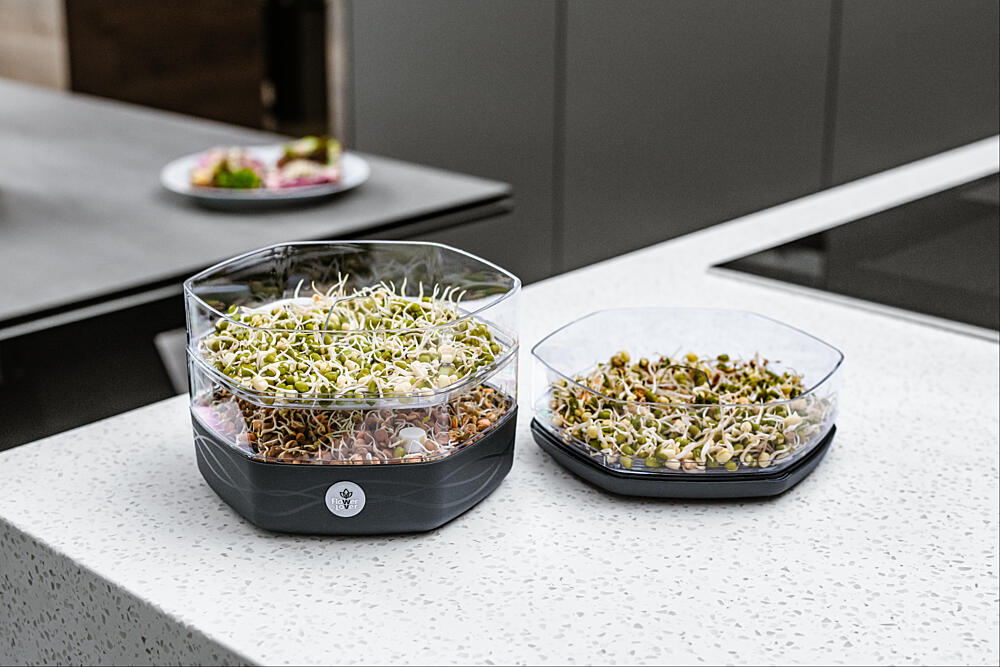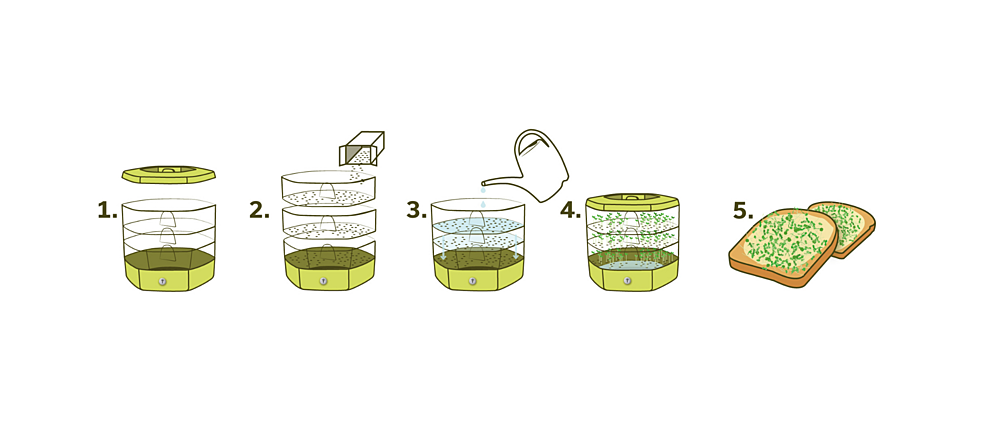You have probably heard about sprouts already and I think you have even tasted it as a part of some Asian meal where the sprouts are a common ingredient. It is becoming more and more popular also in the western world as the healthy living trend grows. Why? Because sprouts are superfood!

And what about microgreens, is it the same? In fact, microgreens are just the next growth phase of sprouts. Beans or seeds start to germinate already on the 2nd – 3rd day after soaking and if you do not eat them straight away and let them grow they became tiny green plants – Microgreens.
Microgreens contain up to 9x more vitamins and minerals than the adult plant
What is so miraculous about sprouts and microgreens? These little babies of vegetables, herbs, and legumes are full of vitamins, minerals, enzymes, and antioxidants. According to the research made by the National Center of Biotechnology, microgreens contain up to 9x more vitamins and minerals than adult veggie. Therefore its ideal food to supply energy, maintain a stable sugar level, and prevent cancer and other civilization diseases.

grow your own sprouts and microgreens at home
The best way is to germinate your own sprouts at home. In that case, you have absolute control over the quality of the seeds. And as a bonus, you will save a lot of money. And how to do that? It is super easy! All you need is a sprout bowl. You just spread the seeds on the surface of the bowl and pour water twice a day. In 2-3 days the seeds should germinate and are ready to eat. If you prefer microgreens over the sprouts let them grow for another 3 days till they become little plants.

what to eat and how to eat the sprouts
You can grow almost everything. Broccoli, Radish, Kale, Carrot, and red cabbage are the most favorite veggies to germinate. Popular are also legumes (lentils, mungo beans, peas, chickpeas) and grains (barley, oats, rice, buckwheat). As a sprout, the grains contain only minimum gluten therefore they are suitable also for people on a gluten-free diet.
Choose the seeds wisely and avoid chemically treated products. Always go for bio quality.
There is only one rule for cooking with microgreens in the kitchen. Use it as a fresh ingredient to preserve all the vitamins. Use it as a seasoning and decoration on the sandwich, to the salad, on an omelet, or to the soup.
Try to grow your own sprouts with our Mungo bowl.


